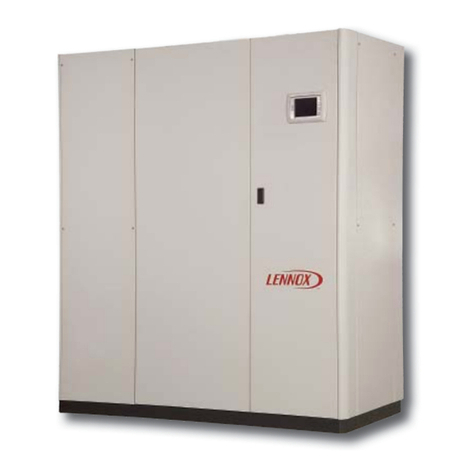Enviro VS09-36 Owner's manual

Indoor Packaged equIPement
InstallatIon, oPeratIons, maIntenance Supersedes: ET145.18-IOM1 (513) Form ET145.18-IOM1 (115)
Issue Date:
January 21, 2015
VertIcal stacked water source Heat PumP
model VB/Vm/Vs09-36 caBInet
and
model Vscs09-36 cHassIs
r-410a
LD18013LD18014

FORM ET145.18-IOM1 (115)
ENVIRO-TEC 2
IMPORTANT!
READ BEFORE PROCEEDING!
GENERAL SAFETY GUIDLINES
This equipment is a relatively complicated apparatus.
During installation, operation, maintenance, or
service, individuals may be exposed to certain
components or
conditions including, but not limited to:
refrigerants
, oils, materials under pressure, rotating
components, and both high and low voltage. Each of
these items has the potential, if misused or handled
improperly, to cause bodily injury or death. It is the
obligation and responsibility of operating/service
personnel to identify and recognize these inherent
hazards, protect themselves, and proceed safely in
completing their tasks. Failure to comply with any of
these requirements could result in serious damage to
the equipment and the property in which it is situated,
as well as sever personal injury or death to themselves
and people at the site.
This document is intended for use by owner-authorized
operating/service personnel. It is expected that this
individual possesses independent training that will en-
able them to perform their assigned tasks properly and
safely. It is essential that, prior to performing any task
on this equipment, this individual shall have read and
understood this document and any referenced materials.
This individual shall also be familiar with and comply with
all applicable governmental standards and regulations
pertaining to the task in question.
SAFETY SYMBOLS
The following symbols are used in this document to alert the reader to areas of potential hazard.
DANGER indicates an imminently
hazardous situation which, if not
avoided, will result in death or serious
injury.
WARNING indicates a potentially
hazardous situation which, if not
avoided, could result in death or serious
injury.
CAUTION identifies a hazard which could
lead to damage to the machine, damage
to other equipment and/or environmental
pollution. Usually and instruction will be
given, together with a brief explanation.
NOTE is used to highlight additional in-
formation which may be helpful to you.
All wiring must be in accordance with published specifications and must be performed ONLY
by qualified service personnel. The manufacturer will not be responsible for damages/problems
resulting from improper connections to the controls or application of improper control signals.
Failure to follow this will void the manufacturer’s warranty and cause serious damage to property
or injury to persons.

FORM ET145.18-IOM1 (115)
ENVIRO-TEC 3
CHANGEABILITY OF THIS DOCUMENT
In complying with the manufacturer’s policy for continuous product
improvement, the information contained in this document is subject
to change without notice. While ENVIRO-TEC makes no
commitment to up-date or provide current information automatically
to the manual owner, that information, if applicable, can be obtained
by contacting the nearest ENVIRO-TEC service office.
It is the responsibility of operating/service personnel as to the
applicability of these documents to the equipment in question. If
there is any question in the mind of operating/service personnel as
to the applicability of these documents, then, prior to working on the
equipment, they should verify with the owner whether the equipment
has been modified and if current literature is available.
TABLE OF CONTENTS
NOTICE & DISCLAIMER………………………………………..………………...………………………….....4
PREPARING TO INSTALL UNIT………………………………………..………………...…………………... 4
Literature………………………………………..………………...…………………………………...........4
Shipping………………………………………..………………...…………………………………............4
Inspection & Storage………………………………………..………………...……………………………4
Pre-Installation………………………………………..………………...…………………………………..4
Rigging………………………………………..………………...…………………………………..............5
RISER/CABINET INSTALLATION………………………………………..………………...………………...11
Cabinet Placement………………………………………..………………...………………………….…11
Supply and Return Piping………………………………………..………………...…………………….12
Hoses………………………………………..………………...…………………………………..............12
ELECTRICAL WIRING………………………………………..………………...…………………………….. 15
Field Installed Power Wiring………………………………………..………………...………………….15
Field Installed Low Voltage Wiring………………………………………..………………...…………..15
Optional Surface Mount Thermostat Connection Wiring………………………………………..…….15
Optional Remote Mounted Thermostat Wiring………………………………………..………………. 15
Optional ADA Door Mounted Thermostat………………………………………..………………...….. 16
ECM Continuous Fan………………………………………..………………...………………………....16
CLOSET & DRYWALL INSTALLATION………………………………………..………………...…………. 16
ACOUSTIC RETURN AIR PANEL………………………………………..………………...………………...16
SUPPLY AIR DUCTWORK………………………………………..………………...………………………...20
Horizontal Supply Air………………………………………..………………...………………………….20
Top Discharge Supply Air………………………………………..………………...…………………….20
TOP MOUNTED FRESH AIR SUPPLY OPENING………………………………………..…………….... 23
Top Mounted Fresh Air………………………………………..………………...………………………. 23
Top Mounted Fresh Air with Motorized Damper………………………………………..…………….. 23
CHASSIS INSTALLATION………………………………………..………………...………………………....25
Units with NPSH Valve Connection and Hose Sets………………………………………..………....25
Units with NPT-Style (Tapered Pipe Thread) Valve Connection and Hoses................................. 25
UNIT START-UP……………….…………………………………………....................................................27
Pre-Start-up Checklist………………………………………..………………...………………………... 27
Initial Unit Start-up..........................................................................................................................27
System Loop Temperature.............................................................................................................27
FAN SPEED ADJUSTMENT…………………………….………………................................................... 28
MAINTENANCE…………………….………………..…………………...................................................... 30
UNIT CONTROLS…………………………………….……………………..................................................30
SYSTEM FLUSHING AND CLEANING……………………………………...............................................33
APPENDIX
Wiring Diagrams………………………………………..………………...…………………………….... 34
R-410A Quick Reference Guide...…..............................................................................................38

FORM ET145.18-IOM1 (115)
ENVIRO-TEC 4
After installing the unit, show the user how to turn
off the electricity to unit. Point out control and
switch locations for turning off the electricity.
Make sure user understands the importance of
following all safety precautions.
1. NOTICE & DISCLAIMER
As originally manufactured, this unit contains refrigerant
installed by the manufacturer. The manufacturer uses only
refrigerants that have been approved for use in the unit’s
intended country or market. The manufacturer’s distributors
similarly are only authorized to provide refrigerants that have
been approved for use in the countries or markets they serve.
The refrigerant used in this unit is identified on the unit's
faceplate and/or in the associated manuals. Any additions of
refrigerant into this unit must comply with the country’s
requirements with regard to refrigerant use and should be
obtained from the manufacturer’s distributors. Use of
unapproved refrigerant substitutes will void the warranties and
can cause injury or death.
DISCLAIMER
Customer modifications to ENVIRO-TEC certified products are
prohibited.
The manufacturer has certified the product as being compliant
with applicable government and/or industry standards. Product
certification is designated either on the product itself or in the
product literature. The certification mark identifies the
applicable standards as well as the Nationally Recognized
Test Lab (NRTL) or other testing facility that conducted the
testing, where applicable. If changes are made to the product,
an engineering review will be needed to assess the impact to
the product certification. In some instances, the changes may
be such that the NRTL or testing facility will need to review and
potentially re-approve of the product by means of a field or site
inspection and certification. Any person or entity making
changes to the product is responsible for obtaining any
necessary engineering review and re-approval. Unauthorized
customer modifications to ENVIRO-TEC products are
prohibited for the following reasons:
A. Modifications may create hazards which could result in
death, serious injury or equipment damage.
B. Modifications will void product warranties.
C. Modifications may invalidate product certifications.
Modifications may violate Country standards. Country
standards may require that only certified products be
used in certain applications, and modifications that result
in the loss of product certification may violate those
standards.
2. PREPARING TO INSTALL UNIT
A. Literature
Review this Manual and the Users’ Manual Information.
After installing the unit; give this Installer’s Information Manual
to the end user. If you need help on any of the installation
instructions or other matters relating to the unit, contact the
office where you bought the unit. You may also refer to the
unit rating plate for a contact name.
B. Shipping
Cabinets and risers are shipped in one of the following
configurations:
A. Risers are attached to cabinet, and cabinets are stacked
on their side. Chassis ships on separate skids.
B. Risers ship loose packaged in boxes and sorted by floor.
Cabinets ship upright up to 4 per skid. Chassis ships on
separate skids.
C. Risers ship loose in packaged boxes, sorted by floor.
Cabinets ship upright on skids with chassis inside cabinet
(chassis electrical and water connections are not
installed). Cabinet must remain standing upright. Do not
place cabinets on their side with chassis inside. Chassis
is secured to service panel. Remove screws before
removing service panel and chassis.
C. Inspection & Storage
Cabinets, chassis and risers should be stored in the same way
they were shipped. Store in a dry area and ensure chassis
units are always in their upright position. If risers are being
stored at the job site ensure the ends are capped to prevent
contamination.
In areas where construction is not complete—including dry
walling, plastering, painting, and where emission of dust
particulates or fumes from out-gassing are present—all
precautions must be taken to protect the cabinet, cabinet
openings, and chassis from physical damage and
contamination by foreign material.
A. Check the unit for indications of damage in shipment.
Notify the Transportation company of any damage and
note the damage on the shipping receipt.
Rough handling may dislocate and damage internal
components.
B. Check riser projections at each end of the cabinet for
misalignment or end damage that would prevent making
an acceptable connection.
C. Thermostats and other accessories which have been
shipped separately should be inspected for quantity and
transit damage.
D. Store the refrigeration chassis in the normal upright
orientation to maintain oil in the compressor sump.
D. Pre-Installation
A. Verify the model number on the unit nameplate with the
ordering and shipping information, to ensure the correct
unit has been shipped.
B. All cabinets may not be equipped with the same size
riser, or the same air supply grille arrangement. Carefully
inspect each unit before delivery to the installation site. In
most cases, each cabinet will be individually tagged for a
specific location in the building.
C. Keep the cabinet sealed with the shipping materials until
all plastering, painting and construction work is complete.
D. Remove the inner service panel, and manually check the
blower wheel for free rotation.
E. Match the refrigeration chassis to the proper cabinets by
referring to the cabinet and chassis nameplate and label
information.
F. Remove the chassis refrigeration access panel (top
cover) and inspect the unit. Ensure that the refrigerant
tubing is free from obvious physical damage and kinks,
and check that piping does not touch other unit
components.

FORM ET145.18-IOM1 (115)
ENVIRO-TEC 5
G. The compressor is mounted on neoprene isolators with
metal spacing sleeves inside and secured with nuts,
which must be snug against the metal spacer sleeves.
H. Inspect all electrical connections. Connections must be
clean and tight at the terminals.
DO NOT USE THE RISERS TO LIFT THE CABINET
ASSEMBLY!
DO NOT install this unit outdoors.
A compressor/unit comprises a pressurized
system. Never Loosen threaded joints while the
system is under pressure and never open
pressurized system parts.
Before servicing, open and tag all disconnect
switches.
Do not install units in a flammable environment due
to the danger of an explosion.
Safety guards, shields, barriers, covers and
protective devices must not be removed while the
compressor / unit is operating.
All safety features, disengagement and interlocks
must be in place and function correctly before the
equipment is put into operation. Never by-pass or
wire around any safety device.
Use gloves and protective goggles and where
appropriate, make sure to have a gas mask close at
hand. Also use electrical protection equipment and
tools suited for electrical operation purposes.
Personnel must be qualified according to national
safety rules and regulations.
The system should be installed by manufacturer-
qualified personnel. If not, it may cause water
leakage, electric shock or fire.
E. Rigging
Follow all applicable regulations and safety practices during
rigging and lifting. Prepare and follow written rigging and lifting
plan. Lifting must be directed by trained professional rigger.
Spreader bars must be used and be long enough to prevent
rigging from contacting unit. Use all and only designated lift
points according to unit's Manual(s). Locate center of gravity
through trial lifts to account for possible variations in unit
configuration. Use rigging and lifting techniques that keep unit
stable and level. Keep clear of unit when lifted.

FORM ET145.18-IOM1 (115)
ENVIRO-TEC 6
FIGURE 1 – Cabinet & Chassis Model Nomenclature

FORM ET145.18-IOM1 (115)
ENVIRO-TEC 7

FORM ET145.18-IOM1 (115)
ENVIRO-TEC 8
TABLE 1 – Physical Data
1) Nominal Capacity calculated in accordance with ARI/ISO Standard 13256-1 for Water Loop Application.
2) Cabinet weight is approximate and does not include weight of risers.
Model Ser i es 09 12 15 18 24 30 36
Nominal Cooling (Ton)10.75 1.0 1.25 1.5 2.0 2.5 3.0
Compressor Type
Refri gerant Cha rge (oz) 21 25 34 38 44 48 50
Air Coil-Type
Face Area (s q ft) 1.46 1.56 2.35 2.35 2.63 3.33 3.33
Rows/FPI 2/16 3/14 3/14 3/14 3/14 3/14 3/14
Water Coil-Type
Standard Blower/Motor
Diameter x Width (in) 9x4T 9x4T 9x7T 9x7T 9x7 9x8 9x8
Motor HP 0.10 0.10 0.17 0.17 0.25 0.33 0.50
Hi -Sta ti c Blower/Motor
Diameter x Width (in) 9x4T 9x4T 9x7T 9x7T 10x7T 10x8T 10x8T
Motor HP 0.10 0.10 0.17 0.25 0.33 0.33 0.50
ECM Blower/Motor
Diameter x Width (in) 9x4T 9x4T 9x7T 9x7T 10x7T 9x8 9x8
Motor HP 0.33 0.33 0.33 0.33 0.33 0.50 0.50
Hi -Sta ti c ECM Blower/Motor
Diameter x Width (in) 9x4T 9x4T 9x7T 9x7T 10x7T 10x8T 10x8T
Motor HP 0.33 0.33 0.33 0.33 0.33 0.50 0.50
Filter Quantity-Size (in) 1-14x25x1 1-14x25x1 1-16x30x1 1-16x30x1 1-16x30x1 1-20x30x1 1-20x30x1
Cabinet Weight (lb)2130 130 145 145 150 175 175
Chassis Weight (lb) 70 75 95 100 140 155 160
DWDI Forward-Curved Centrifugal / ECM Direct-Drive
DWDI Forward-Curved Centrifugal / ECM Direct-Drive
Rotary
Scroll
Enhanced Copper Tubes, Enhanced Aluminum Fins
Enhanced Surface Co-Axial
DWDI Forward-Curved Centrifugal / PSC Direct-Drive
DWDI Forward-Curved Centrifugal / PSC Direct-Drive

FORM ET145.18-IOM1 (115)
ENVIRO-TEC 9
Note:
1) Supply, Return, and Condensate riser openings are pre-punched on all sides and field convertible. Cut tabs to remove knock-out.
2) Supply and Return openings are 4” x 2.5”. During riser installation, ensure stub-out is centered in supply and return openings.
3) Condensate P-trap is accessible from front by removing bottom cover plate.
4) Riser and shut-off location is measured from base of cabinet and does not include stand height.
FIGURE 2 – Cabinet Unit Dimensions & Floor Sleeve Dimensions
80"
or
88"
B A
6
48
4.5
3
50
7
OPTIONAL 24V
CONNECTION FOR
SURFACE-MOUNT/
REMOTEMOUNTED
THERMOSTAT
SWITCH PLATEw/
2-SPD FAN SWITCH
(OPTIONAL:
DISCONNECT/
FUSES,
ADA MOLEX CONN.)
7/8" CONTROL
ENTRANCE
CHASSIS
SERVICE
PANEL
ELECTRICAL BOX
OPTIONAL
FRONT SUPPLY
OPENING
RETURN AIR
FLANGE
STANDARD 1 IN.
LEFT VI EW FRONT VI EW
SERVICE
HOSES
PASS-THRU
RISER
OPENING
KNOCK-OUTS
(ALL 3 SIDES)
Model A B
R.A Flange
Width
09-12 17 17 16
15-24 20 20 19
30-36 24 24 23
Cabinet Dimensions

FORM ET145.18-IOM1 (115)
ENVIRO-TEC 10
Note:
1) Riser shut-off valve is measured from base of cabinet and does not include stand height.
FIGURE 2A – Cabinet Riser Dimensions

FORM ET145.18-IOM1 (115)
ENVIRO-TEC 11
3. RISER / CABINET INSTALLATION
A. CABINET PLACEMENT
Refer to Figure 2, which shows the correct location of the
cabinet in relation to the floor sleeve and risers.
Do not use the risers to lift or move cabinets.
Risers must not be used to lift cabinets. Risers are not
designed to support or lift any part of the cabinet. Risers are
attached using nylon ties to allow for slight adjustments during
installation, and expansion of riser column during operation.
Care must be taken during installation to avoid damage to
risers and riser stub-outs.
Improper handling and installation of risers could
damage riser stub-outs and valves could result in
property damage, death or serious injury.
Do not allow the risers to bottom out. Riser stub-out
should be centrally located with cabinet riser stub-
out opening. Do not allow riser stub outs or risers
to contact cabinet sheet metal.
Do not drag risers on floor while moving the
cabinet.
For orders where risers are shipped loose, riser installation
can be done first before installation of cabinets. During riser
installation ensure riser stub-outs will be centered in the
cabinet openings. Do not allow risers to bottom out in swage.
Where risers are shipped attached to cabinets, installation of
risers and cabinets is done at the same time without the need
to detach risers from cabinet.
1. Place the cabinet in a horizontal position on the floor
adjacent to its installation location (when risers are
attached to cabinet).
2. The units are designed to accommodate a maximum
supply and return riser stub-out movement of 1-1/2
inches, due to expansion and contraction (total movement
of 3 inches). If the total calculated riser expansion or
contraction exceeds 1-1/2 inches, field installed
expansion compensation must be provided.
The initial positioning of the riser stub-out is correct when
the top of the riser pipe is 3 inches above the top of the
cabinet (applies to standard riser models only:
VBR/VMR/VBS)
3. If the installation requires the use of field or factory
provided riser extensions, install the extensions to the
unit-mounted risers prior to moving the cabinet into final
position.
4. Raise the cabinet upright and lower the risers through the
floor cut-out, aligning the risers into the swaged section of
the unit on the floor below.
Take extra care not to scrape or dent risers during
positioning. The riser tailpiece should insert
approximately 2" into the 3" long swaged section of
the unit below.
To ensure correct riser positioning, and to
compensate for variations in floor-to-floor
dimensions, DO NOT allow the riser tailpiece to
bottom out into the swaged section.
5. Center the risers in the pipe chase, and level the cabinet
using shims as necessary.
6. Plumb risers in two planes to assure proper unit operation
and condensate drainage.
7. Placing cabinets on vibration isolation pads is
recommended to reduce noise transmission into floor.
Anchor cabinets into place, using sheet metal angles.
Do not drill, or drive screws into the cabinet in the
area of the internal drain pan.
8. Center the risers’ horizontal stub-outs (complete with
factory-installed shut-off valves) in the cabinet slot
openings. Ensure that the stub-outs are perpendicular to
the side/back panel.
9. Verify all risers are vertical and that they penetrate the
swaged joint at least 1". Factory provided risers come
with a 3 inch deep swage. Do not allow risers to
completely bottom out at 3 inches in the swage. The 3
inch swage depth is oversized to allow for adjustments if
necessary to keep riser stub-outs and valves centered in
the cabinet opening. Riser stub-out should be centered in
cabinet opening to allow for expansion and contraction.
Riser stub-outs must not contact on any sheet metal
opening, otherwise damage can occur to stub-outs,
resulting in water leaks and property damage.
Correct Position of Stub-Out in Cabinet Riser Opening:
Incorrect Position of Stub-Out in Cabinet Riser Opening:
10. Braze or solder riser joints with industry accepted solder
or brazing rod material.
Riser system must be secured to building
structure. Cabinets are not designed to support
riser system.
11. The riser system must be secured, at a minimum of
one point, to the building structure. Cabinets are not
intended to support riser system! If the temperature
range of the system will exceed the allowed expansion
and contraction limits (1-1/2 inches maximum), riser
compensation provisions must be made by the installing
contractor.

FORM ET145.18-IOM1 (115)
ENVIRO-TEC 12
12. Ensure that individual unit shut-off valves remain closed
until the circulating loop system has been cleaned and
flushed.
B. SUPPLY AND RETURN PIPING
1. Install a drain valve, shut-off / balancing valves, flow
indicators, and drain tees at the base of each supply and
return riser to enable system flushing, balancing, and
servicing.
2. Install strainers at the inlet of each circulating pump.
3. Insulate loop water piping that runs through
unconditioned areas of the building, or outside the
building. When loop water temperature is maintained
between nominal operating limits of 60-90oF, piping will
not sweat or suffer undue heat loss at conditioned space
temperatures.
4. Install vents in piping loop as required to bleed residual
air from the piping system during filling and servicing.
5. Refer to the following diagrams for determining what riser
shut-off valves and hose kits are required for job specific
site conditions.
A. Factory supplied risers will come with the
appropriate hose kits with NPSH type fittings (see
Diagram A). Before attaching hoses check that the
female end gasket is not missing and free of
damage or debris. See Table 3 below for
information on replacement gaskets.
B. For field supplied risers we recommend ordering the
appropriate NPSH type field hose kits from the
factory, complete with shut-off valves. Shut-off
valves are to be field sweat connected to risers (see
Diagram B).
C. Legacy chassis with NPT type connections and
matching risers with NPT shut-off valve connections
require a special hose kit complete with NPT to
NPSH swivel adapter on the shut-off valve and
chassis connection (see Diagram C) to mate to
factory hoses.
C. HOSES
Ensure the correct hose set is matched with the compatible
unit size, see Table 2. When installing NPSH factory provided
hoses installer must follow these procedures when installing
hoses:
1. Inspect for missing or damaged hose gasket, see Table 3
for replacement gasket part numbers.
2. Tighten by hand screw connections to male NPSH fitting
on shut-off valve. Hold ferrule stationary when tightening.
3. Tighten by hand then using a back up wrench tighten a
further quarter (1/4) turn only. Do not over-tighten!
When installing hoses do not apply a twist or
torque load on the hose.
When tightening hoses hold ferrule stationary by
hand while tightening the screw connections. Avoid
tight bends or water flow and high pressure drops
may occur.
Hose gasket does not require extreme tightening to
obtain a seal. DO NOT OVERTIGHTEN or damage to
gasket or sealing surface will occur. Do not apply
thread sealant.
Table 2: Chassis Hoses
CHASSIS MODEL HOSE TYPE
09/12/15/18 1/2” NPSH FEMALE-FEMALE
24/30/36 3/4" NPSH FEMALE-FEMALE
Table 3: Replacement Hose Gaskets
REPLACEMENT GASKETS FOR NPSH HOSE KITS
Part No. Description
VSGK-UFHW-050 1/2" RUBBER GASKET
VSGK-UFHW-075 3/4" RUBBER GASKET
HOSES MUST BE HAND TIGHTENTED THEN
FURTHER TIGHTENED NO MORE THAN 1/4 TURN.
DO NOT APPLY EXCESSIVE FORCE!
ALWAYS USE A BACK-UP WRENCH WHEN
TIGHTENING HOSES TO VALVES! OTHERWISE
VALVE SOLDER JOINT MAY FAIL LEADING TO
PROPERTY DAMAGE OR SERIOUS INJURY!

FORM ET145.18-IOM1 (115)
ENVIRO-TEC 13
Diagram A -Standard Factory Supplied NPSH Hose Kits and Risers (As of June 2013)
Diagram B –Optional Field Supplied Risers w/ Factory Supplied NPSH Hose Kits and Shut-Off Valves

FORM ET145.18-IOM1 (115)
ENVIRO-TEC 14
* For VB cabinets built prior to June 2013
Diagram C – Conversion of NPT to NPSH type fittings (VB Units with NPT fittings only)*

FORM ET145.18-IOM1 (115)
ENVIRO-TEC 15
4. ELECTRICAL WIRING
LOCK ALL ELECTRICAL POWER SUPPLY
SWITCHES IN THE OFF POSITION BEFORE
INSTALLING THE UNIT. FAILURE TO DIS-CONNECT
POWER SUPPLY MAY RESULT IN ELECTRICAL
SHOCK OR EVEN DEATH.
A. Field Installed Power Wiring
Power wiring to the equipment must conform to National and
Local Codes (NEC) by a professional electrician.
Provide each unit with its own separate electrical circuit,
means of circuit protection, and electrical disconnect switch.
Follow current National Electrical Code ANSI/NFPA 70, CSA
C22.1 C.E.C. Part 1, and state and local codes.
Failure to provide these shut-off means could cause
electrical shock or fire, resulting in damage, injury
or death.
Use Copper Conductors Only!
Verify that the available unit power supply is compatible with
the unit’s nameplate rating. Ensure breaker is properly sized
as per nameplate. Line voltage supply enters through the right
hand side of the cabinet at the 7/8” power entrance knock-out.
Connect to the line side of the factory installed terminal block.
Unit terminals are not designed to accept other types of
conductors. Failure to use copper conductors may result in
equipment damage.
B. Field Installed Low Voltage Wiring
Select a location for room thermostat that is away from supply
air registers, on draft-free interior wall, and not near lights,
television, direct sunlight, or other heat sources.
Thermostat connection within the unit is accomplished by
connecting the remote thermostat wiring to microprocessor low
voltage terminal strip. See Figure 4 for typical wiring
connections.
Locate thermostat away from supply drafts. Ensure
the back of thermostat is sealed and protected from
air drafts. Short cycling can result in damage to unit.
RECOMMENDED
WIRE SIZE
MAX. LOW VOLTAGE
WIRE LENGTH
20 gauge
50 feet
18 gauge
75 feet
16 gauge
125 feet
FIGURE 4 – FIELD WIRING DIAGRAM
Ensure that the control wiring between the thermostat and the
unit’s terminations does not exceed 1 ohm.
Resistance in excess of 1 ohm may cause
component damage due to insufficient AC voltage
supply.
Check all loads and conductors for grounds, shorts,
or misfiring. Do not run the low voltage wiring in the
same conduit with the high voltage power wiring.
C. Optional Surface Mount Thermostat Connection Wiring
For applications where thermostat is mounted directly above
the return air panel, cabinet Control Option ‘P’ must be
selected (i.e. VB12P). Thermostat molex pigtail harness
(shipped loose to field) is field wired to thermostat terminals
and molex connector clips to mating panel mounted molex
connector on unit cabinet, located 7 inches above the electrical
box. See optional 24V surface mount connection in Figure 2.
D. Optional Remote Mounted Thermostat Wiring
For units ordered with extended thermostat harness option the
thermostat is remote mounted and specific extended harness
length can be ordered. Extended harness is plenum rated. Use
low voltage 7/8” knock-out on the side of the unit at the
electrical box to field wire the low voltage thermostat wiring.
Using a plastic bushing pass harness inside electrical box to
factory wired mating molex harness. See Figure 5 below.
Thermostat pigtail molex harness is shipped loose for field
wiring to thermostat terminals.

FORM ET145.18-IOM1 (115)
ENVIRO-TEC 16
FIGURE 5 – Remote Thermostat Wiring
E. Optional ADA Door Mounted Thermostat
For units ordered with ADA thermostat option to meet the
Americans with Disabilities Act’s (ADA) requirements,
thermostat is located on the return air panel door, at a height
of 48 inches from the base of the cabinet. Unit is supplied with
a custom return air door panel with thermostat mounting holes,
unit switch plate with molex connector, and ADA molex pigtail
harness. See Section 6, Figure 9A.
Wire leads from ADA thermostat harness are field wired to
thermostat terminals. Molex end of ADA thermostat harness is
field connected to surface mounted molex connector at unit
switch plate.
Mount thermostat using the factory provided 1/4” #8 screws.
ADA thermostat harness is plenum rated and will hang in
behind the return air door. For chassis servicing, unclip
harness from unit switch plate.
FIGURE 6 – Unit Switch Plate with ADA Thermostat Connection
F. ECM Continuous Fan
This option features a factory wired continuous low speed fan
circuit. The EC motor (ECM), due to available five motor speed
taps, offers ideal range for supporting continuous low speed
fan.
Fan will run continuously on low fan speed setting even if there
is no demand for cooling or heating. The continuous fan is
controlled by a dry contact to provide interlocking to ERV or
room occupancy control. See Appendix for electrical
schematics.
5. CLOSET & DRYWALL INSTALLATION
To avoid potential vibration and noise issues the
Return Air Panel should not contact any part of the
unit cabinet or sleeve. Maintain a sufficient gap
between R.A. Panel frame and cabinet!
1. Build a closet enclosure for the cabinet that will
incorporate the Return Air panel size while maintaining a
sufficient gap between the closet and cabinet to prevent
the cabinet from contacting the R.A. panel and closet
enclosure. Refer to Section 6 and Figures 7 & 8.
2. Before installing drywall around cabinet, cover the supply
and return openings with plastic or cardboard to prevent
dust or debris from entering the unit components.
3. Install drywall using conventional construction methods.
Studs or drywall should not be fastened directly to the
cabinet surface. The spacing of the framing members will
be dependent on the return air access and the type
/quantity of supply air outlets. See Figures 7 and 8.
4. Install sheetrock around unit cabinet by securing the
drywall to building construction studs. Cut holes around
the supply air and return air openings to allow access to
the unit chassis, unit controls, and the supply air
connection.
5. Vacuum all dust and construction debris from the unit
drain pan, electrical box, and discharge plenum, after
cutting out the supply/returns openings.
To prevent electrical shorts, and drain pan leaks,
DO NOT penetrate unit components when driving
screws near the unit control box or drain pan. Do
not allow screws or nails to penetrate chassis,
risers, electrical junction boxes, conduits, or to
interfere with chassis removal.
6. ACOUSTIC RETURN AIR PANEL
1. Return Air (R.A.) Panel is painted standard “Appliance
White”. Carefully unpack R.A. Panels from shipping box.
R.A. panels with optional key locks require key locks to
be field installed to the slot in panel door. ADA R.A. door
panels come with an opening and pilot holes mounting a
Johnson Controls thermostat. ADA harness for wiring to
thermostat and connecting to unit is shipped loose with
the thermostats.
2. Locate drywall opening at a distance from the unit that
prevents the R.A. panel from contacting the unit sleeve.
See Figure 7 & 8. R.A. panel throat opening should be
centered to the unit cabinet return air flange opening.
3. Fasten R.A. Panel to frame opening using screws
provided. See Figure 7.
4. Refer to Figure 9A showing opening for mounting ADA
compliant thermostat at 48” above floor. Note that
location of opening on door changes if cabinet is ordered
with stand. A left hand opening door is shown. R.A Panel
with ADA is not reversible and must be ordered in either
Left or Right hand opening configuration, determined by
location of door hinge.
Optional
Disconnect
Optional
ADA Molex
Connection

FORM ET145.18-IOM1 (115)
ENVIRO-TEC 17
FIGURE 7 – Critical Return Air Panel with Unit Cabinet Installation Dimensions

FORM ET145.18-IOM1 (115)
ENVIRO-TEC 18
Note:
1) Dimensions shown do not include optional stand height.
FIGURE 8 –Return Air Panel Dimensions
Note:
1) See Figure 7 for additional R.A. panel and cabinet installation information.
FIGURE 9 – R.A Panel Cross Section Installation at Floor Level
*Cut away view for standard cabinet with no
stand. Add stand height to cabinet to obtain
correct dimension of R/A panel from floor.

FORM ET145.18-IOM1 (115)
ENVIRO-TEC 19
FIGURE 9A – Optional Return Air Panel with ADA Mounted Thermostat

FORM ET145.18-IOM1 (115)
ENVIRO-TEC 20
7. SUPPLY AIR DUCTWORK
Installer must ensure there is no direct contact
between cabinet sheet metal parts and drywall
enclosure. This includes return air and supply air
flanges. Failure to follow these instructions will
negatively affect unit sound performance.
A. Horizontal Supply Air
A 2” duct flange (field provided) may be required to eliminate
supply air recirculation when shallow profile, single deflection
supply grilles are installed at the cabinet discharge openings. If
the discharge from the cabinet is not ducted completely into
the conditioned space, air can recirculate into the return air
opening from the space inside the drywall enclosure.
JCI supplied grilles shall have a clearance of ¼” around the
perimeter in order to fit inside the unit supply flange. Other
grille manufacturers could have different clearances and
should be verified.
Field supplied gasket must be applied accordingly in order to
prevent air recirculation and vibration transfer when supply
grilles are mounted to unit supply opening. When mounting
supply grilles with optional volume damper directly to cabinet
supply flange, the volume damper will fit inside the cabinet
supply flange. It is recommended to apply 1/8” neoprene tape
around the perimeter the volume damper prior to inserting into
the supply opening. See Figure 11 for an example. This will
assist in reducing noise transmission and air recirculation into
unit closet
For ducted openings connect the unit supply opening to the
supply ductwork using a watertight flexible duct connector.
This will minimize the transmission of operating sounds
through the supply ductwork. Elbows with turning vanes or
splitters are recommended to minimize air noise due to
turbulence and to help reduce static pressure.
B. Top Discharge Supply Air
Units that are installed with a top discharge should be
connected to the supply ductwork with a watertight flexible
connector. This will minimize the transmission of operating
sounds through the supply ductwork. Elbows with turning
vanes or splitters are recommended to minimize air noise due
to turbulence and to help reduce static pressure.
For information on available unit horizontal and top supply
openings see Table 4 on the following page. Recommended
face velocity at the outlet supply grille is 300-500 FPM. Table
4 gives face velocity at the unit supply openings in relation to
Table 3. To calculate the face velocity at the supply grille, take
the FPM from Table 4 and divide by the supply grille free area
factor.
FIGURE 10 – Supply Grille with Volume Damper and 1/8”
Neoprene Tape Applied To Perimeter
This manual suits for next models
3
Table of contents
Popular Heat Pump manuals by other brands
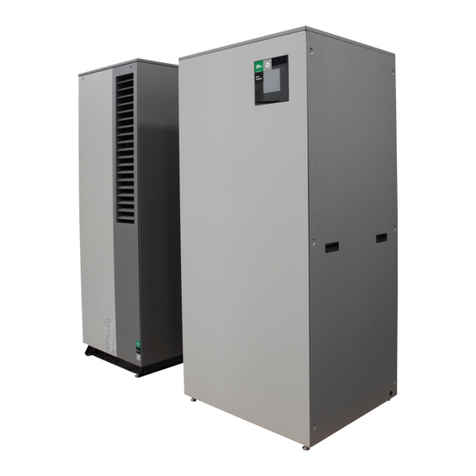
Taco
Taco Glen Dimplex System M Installation and operating instructions
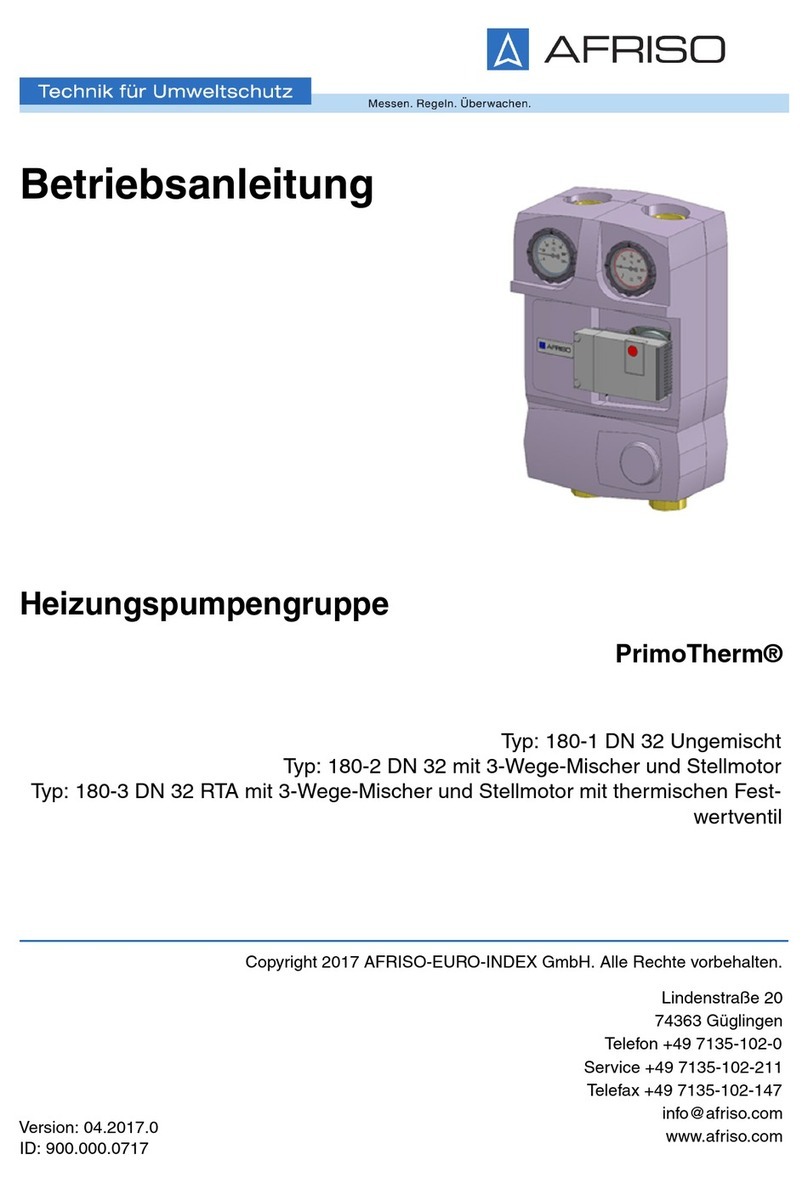
AFRISO
AFRISO PrimoTherm 180-1 operating instructions
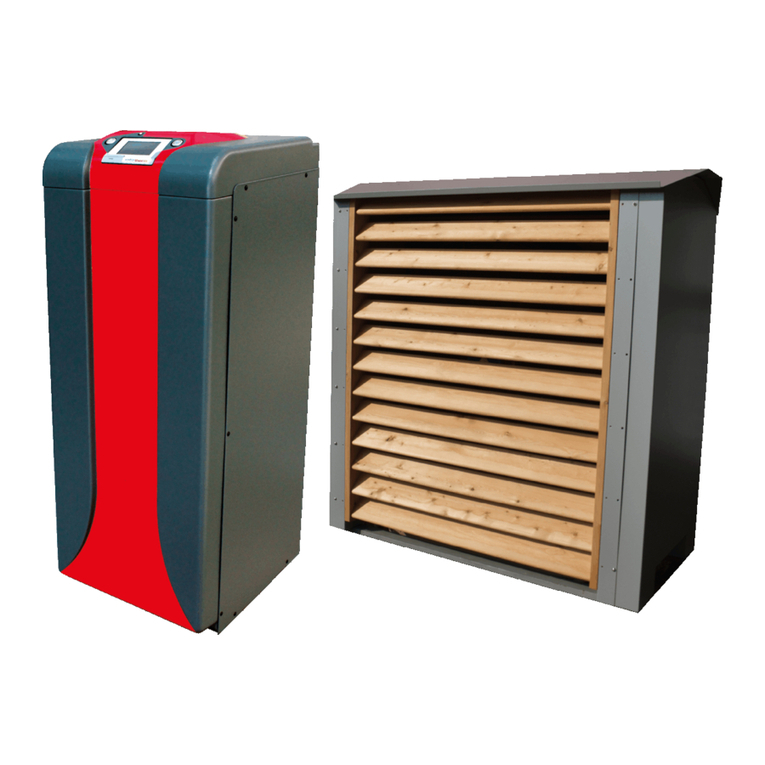
ratiotherm
ratiotherm WP Max-Air Technical document
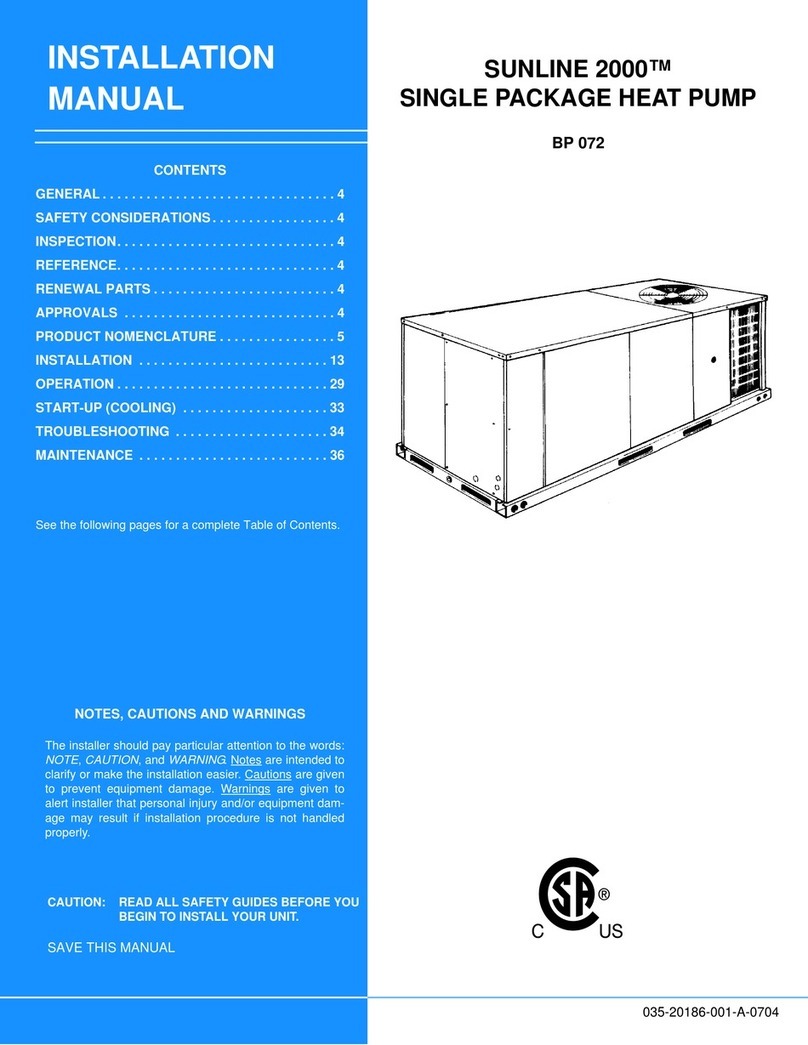
Unitary products group
Unitary products group SUNLINE 2000 BP 072 installation manual

Daikin
Daikin VRVIII Operation manual
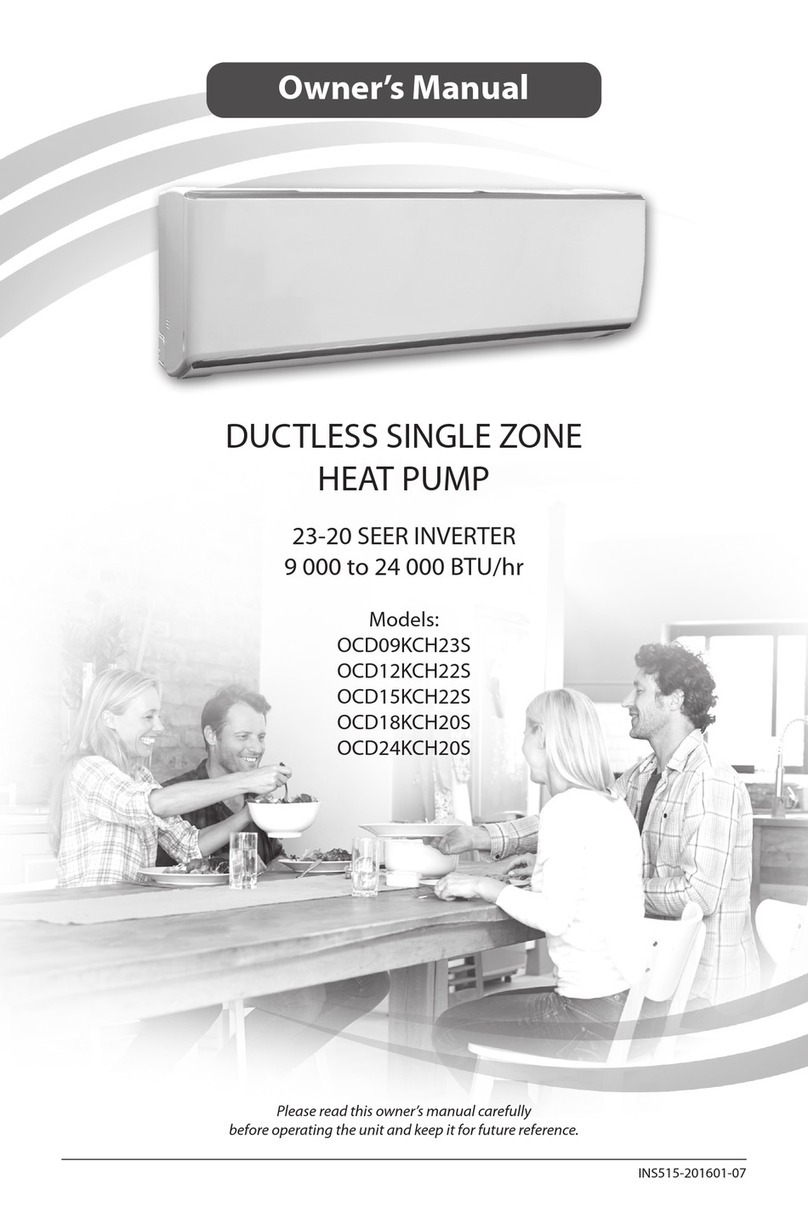
Dettson
Dettson OTP-C Series owner's manual
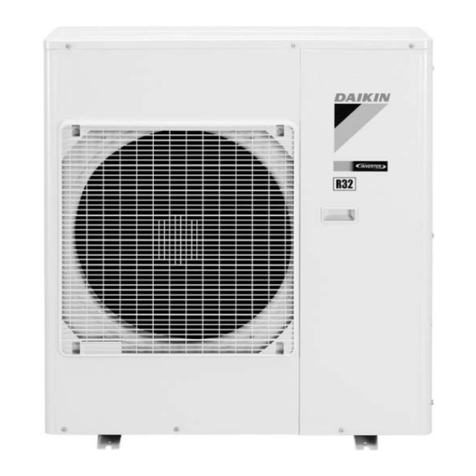
Dakin
Dakin RXM85PVMA Service manual
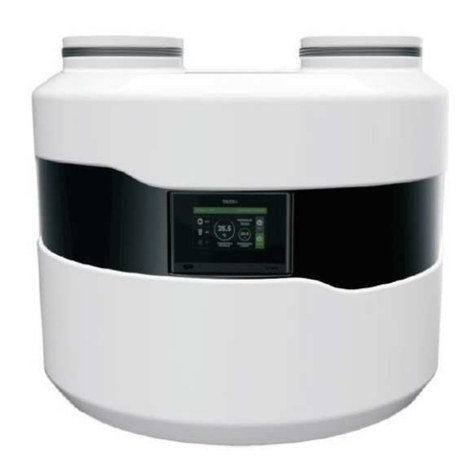
evenes
evenes Gelbi D 4.2 Operating manual and assembly
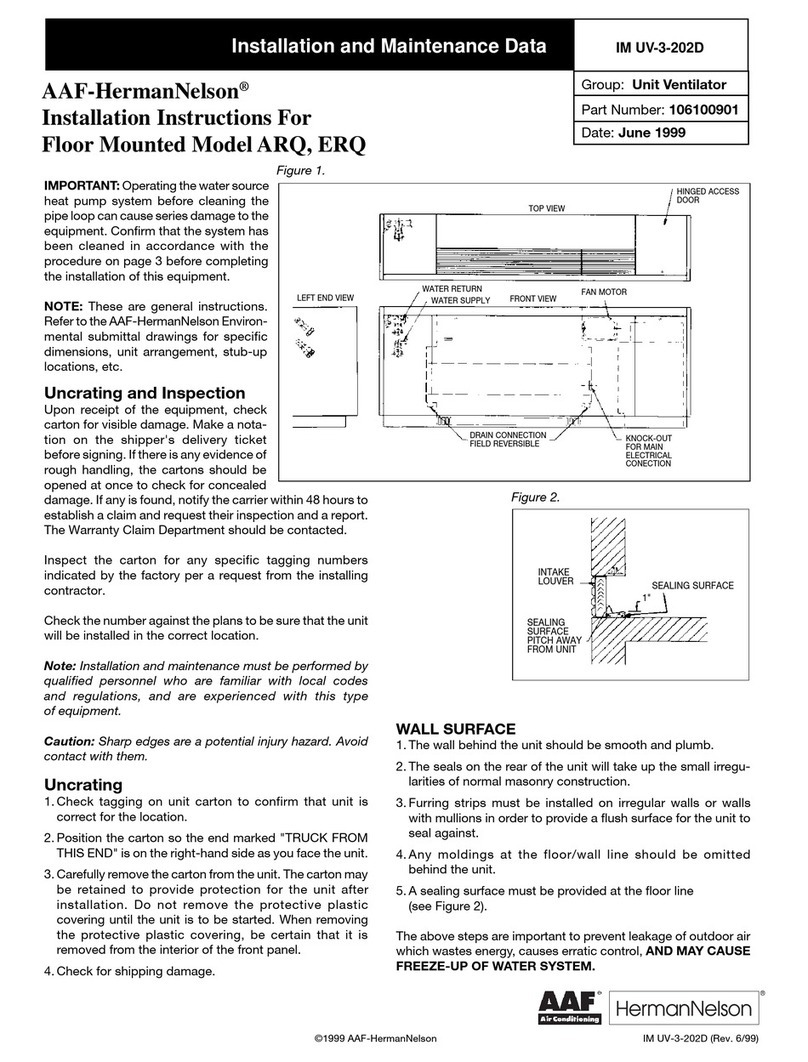
AAF-HermanNelson
AAF-HermanNelson ARQ installation instructions

evoheat
evoheat Force 26-3 Installation & operation

Payne
Payne PH4G B Series installation instructions
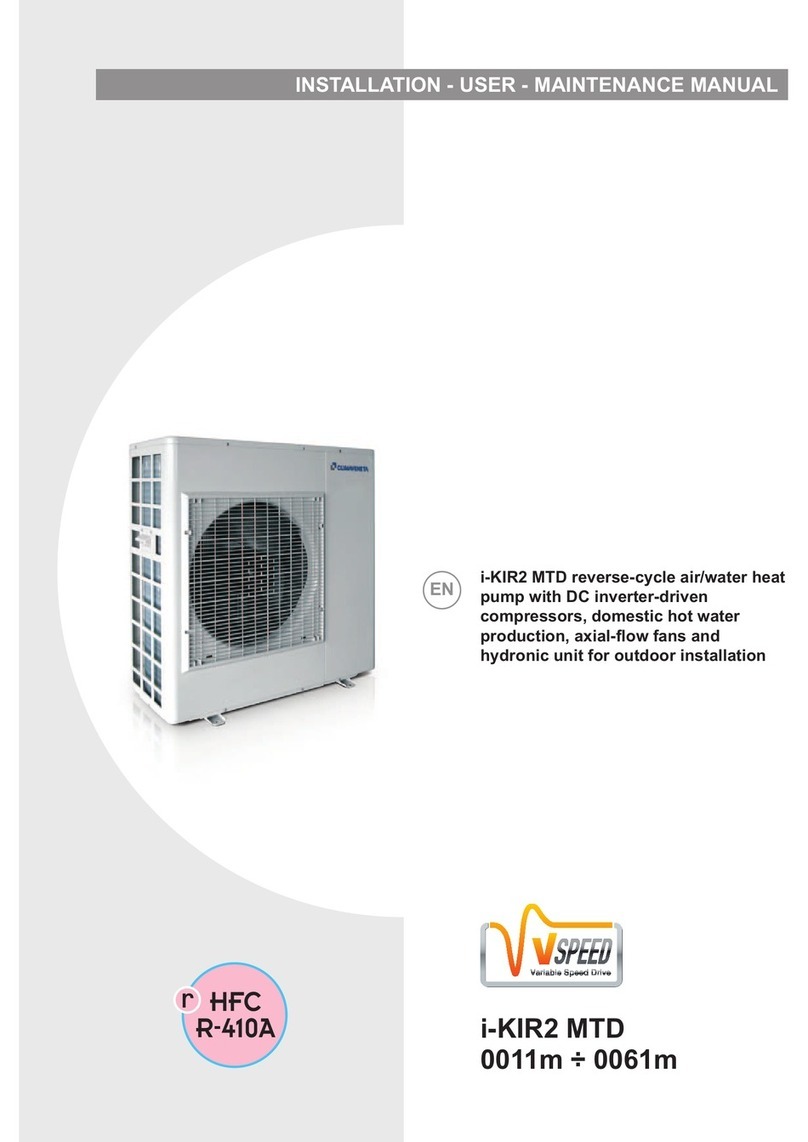
CLIMAVENETA
CLIMAVENETA i-KIR2 MTD Installation, user and maintenance manual



